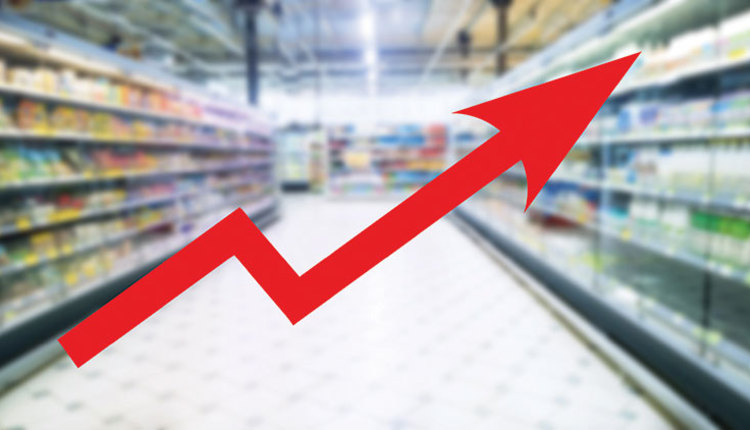
A year has passed since the COVID-19 pandemic shut down our nation and our economy. Our lives have been shattered by countless losses and our industry has been put to the ultimate test. While the worst appears to be behind us and light can be seen at the end of this dark tunnel, the dairy industry is still very much haunted by the events of last year.
Unintended consequences
The pandemic brought to light a number of issues related to Federal Milk Marketing Orders. Unprecedented consumer and marketplace reactions to the economic shutdown created massive shifts away from food service to retail sectors. Given that butter is consumed at a much higher rate in food service than at home, we saw a natural shift toward Class III products and away from Class IV products. Then the Farmers to Families Food Box Program, which also favored Class III products over Class IV food options, exacerbated the divide. These two factors significantly impacted markets and dramatically increased the Class III/IV spread to never-before-seen levels. It also exposed critical weaknesses in our current milk pricing system.
The marketplace fallout of the pandemic uncovered two major flaws:
- Calculation of the Class I mover
- Rules surrounding depooling
Both contributed to extreme negative producer price differentials (PPDs) and milk checks that have never looked so bizarre. As markets become more settled than they have been in past months, several moving pieces are expected to reduce the severity of negative PPDs this year and into the future.
First, the fundamental drivers behind the Class III and Class IV spread are expected to converge. Class III will face pressure against additional U.S. cheese capacity, and Class IV will gain support as we return to a more familiar food service dominant environment.
Second, now that we are acutely aware of the consequences of government action under the current milk pricing equations, the industry is making a push for future food purchases to more uniformly support all dairy product classes. Lastly, the industry is closely examining our present pricing system and working toward solutions to improve flaws in our existing pricing equations.
Today and tomorrow
Where are we today?
Where are we headed?
Both are important questions. Dairy market fundamentals do not have anyone jumping for joy right now. Ongoing supply and demand imbalance has plagued us since last March when dairy demand as we knew it went up in smoke. We have been able to counter this imbalance in two major ways:
- The widespread use of base-excess programs
- Government intervention in dairy markets in the form of product purchases
The two have ebbed and flowed with one another throughout the year. Both are expected to continue in a tug-of-war sort of way in the year to come.
On the supply side, government support of dairy farmers through the Coronavirus Food Assistance Program (CFAP) incentivized production over the past three months, yet the latest milk production report showed growth rates slowing in January due to declining yield rates, very likely the cause of a resurgence in base-excess types of programs.
In the absence of continued supply management programs and the spring flush, cow numbers indicate strong milk production in the short-term. That is balanced by significant escalation in feed costs that are expected to squeeze producer margins and keep milk production at bay in the back half of the year.
Demand side questions
Are fundamentals or outside forces driving the demand side?
The answer is rather clear: Fundamentals no longer tell the entire story. The U.S. government played the role of a significant purchaser of dairy products this past year. It is no longer enough to be a market analyst; one must be a political analyst as well.
Government involvement is expected to continue in 2021, likely in the form of some type of food product purchases. With a new administration in town, the type and degree of government support is unclear, and therefore the ensuing market and producer reactions remain a mystery.
As of press time, the House has passed a $1.9 trillion stimulus plan, with $16 billion set aside for agriculture, but much remains unknown. As long as the U.S. government continues to be a wild card that can significantly shift our market tone and expectations, dairy markets will remain in reactionary mode.
Brighter days ahead
Vaccine distribution is growing by the day and inching us closer toward herd immunity. That is definitely a light at the end of the tunnel. Coinciding with ramped-up vaccinations, warmer weather means that a more familiar world is on the horizon.
The path will be rocky, and we may need some help along the way. Setbacks are sure to occur, and the return to prepandemic normal is unlikely given the lasting impacts the pandemic has had on the restaurant sector, consumers, and our everyday lives.
Some of us have grown quite fond of staying home and baking bread in our sweatpants. Many others will be eager to indulge in dinners out and avoid kitchen clean-up duties. That anticipated shift in consumer dining and purchasing habits is expected to revive food service sales, and for the dairy industry, that means a growth in dairy consumption is near.
No doubt, we will be challenged in the months ahead, but with 2020’s lessons learned, we are better equipped to respond to whatever 2021 throws our way. We have identified weaknesses, and we are on our path to address them.







